And I helped.
(spoiler: it worked)
Subtitle: How to disable Google Now Cards (that keep annoying you) when you swipe left (right? up? argh, fuck this shit!)
I own an Android phone.
In an effort to get rid of a feature that came with updates I’ve been going through dozens and dozens of settings. Unsuccessful, at wit’s end, writing angry loner feedback to Google support (also known as /dev/null) begging for them to make it easy for users to opt out of what I consider intrusive garbage when it turns out I can simply replace the launcher.
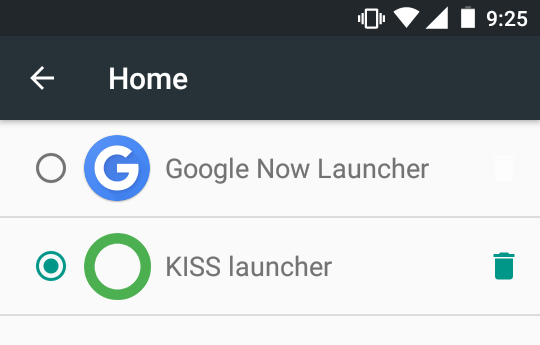
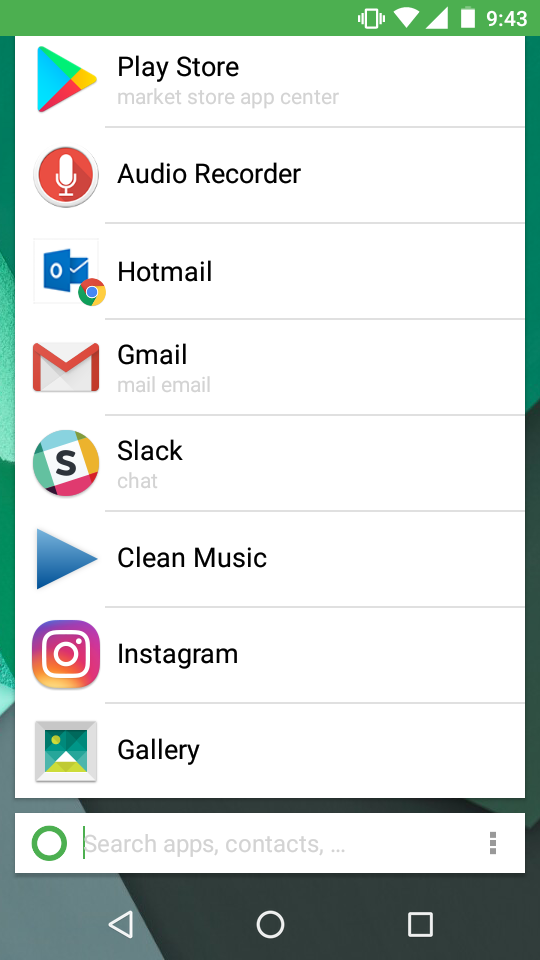
KISS is a programming principle that stands for “Keep it simple, stupid!” The KISS Launcher code is GPL and available on GitHub. The Kiss Launcher app is available for free on Google Play.
#dadphone
The WordPress REST API has been available since 4.7. It’s robust, consistent, and nifty to work with. Why? Backend and mobile developers can use other frameworks while still keeping WordPress around for their customers. Frontend developers can build sites using JavaScript without having to touch PHP. Up is down, left is right, dogs and cats living together… Let’s get started!
WP API supports all HTTP Methods: GET, POST, PUT, PATCH, DELETE, OPTIONS.
WP API respects permissions but the developer must setup authentication separately.
WP API is self-documenting. Send an OPTIONS request to any endpoint and get back JSON Schema compatible info on how to use it:
To get the entire API schema in a single query, add
context=helpat the index. (Ie. http://site/wp-json?context=help )
WP API items have a _links node based on HAL (Hypertext Application Language):
To reduce the number of HTTP requests use the _embed parameter to tell the API that the response should include embeddable resources.
WP API exposes pagination info in the response header.
WP API renders JSON in a generic way that does not match the DB columns. Keep calm and RTFM:
if ( ! empty( $schema['properties']['author'] ) ) {
$data['author'] = (int) $post->post_author;
}
if ( ! empty( $schema['properties']['slug'] ) ) {
$data['slug'] = $post->post_name;
}
if ( ! empty( $schema['properties']['content'] ) ) {
$data['content'] = array(
'rendered' => post_password_required( $post ) ? '' : apply_filters( 'the_content', $post->post_content ),
'protected' => (bool) $post->post_password,
);
}
{
"author": 1,
"slug": "chapter-1",
"content": {
"rendered": "<p>Hello World!</p>",
"protected": false
}
}
Setup the Basic Authentication Plugin on your development environment.
In YARC, add your credentials:
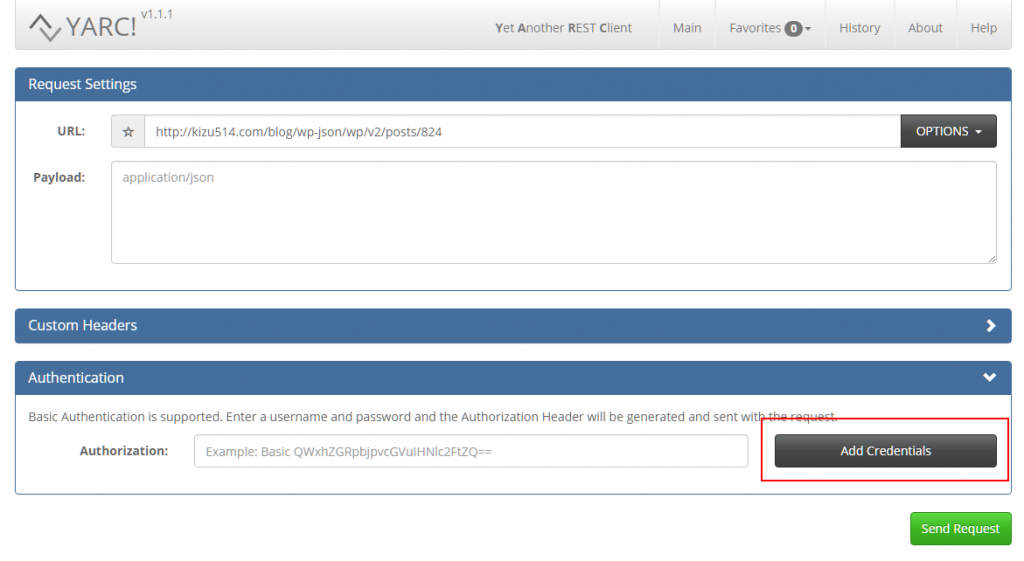 Send an OPTIONS request to a post endpoint. The response will contain, among other information:
Send an OPTIONS request to a post endpoint. The response will contain, among other information:
{
"methods": [
"POST",
"PUT",
"PATCH"
],
"title": {
"required": false,
"description": "The title for the object.",
"type": "object"
},
Translation: The API client can send a PUT request to change the title.
In YARC, send a PUT request with the following JSON to the endpoint:
{
"title": "My changed title!"
}
Congratulations, you just changed the title.
…cue the sound of a thousand keyboards furiously hacking.
The Scrum.org Professional Scrum Master I assessment is a 60 minute time boxed test where you answer 80 multiple choice type questions. The passing score is 85%.
Last time, for my PSD I certification, I studied all by myself.
This time, I participated in a 2 day crash course given by agile coach Pawel Mysliwiec of Pyxis. The course was in French. It was much better than studying alone. It was fun to meet like minded Scrum practitioners.
I took the test April 9, 2017 and passed. My Score was 74 points (or 92.5%)
I now have two pieces of scrum.org flair:
When developing an e-commerce application, unless you work at United Airlines, you generally want to avoid overselling.
Instead of punching your customers in the face why not use MySQL Deadlocks? (Turns out this is a feature not a bug!)
MySQL has 4 transaction isolation levels: SERIALIZABLE, REPEATABLE READ, READ UNCOMMITTED, READ COMMITTED.
In the following proof of concept, where we have 50 of the same product in stock, and we run seige to represent concurrent customers buying the same product at the same time, we expect 50 “Success!” messages in our log files.
When we use any of REPEATABLE READ, READ UNCOMMITTED, or READ COMMITTED we oversell. (boo!)
When we use SERIALIZABLE we do not oversell (yay!) but some users get deadlock errors while others do not. (SQLSTATE[40001]: Serialization failure: 1213 Deadlock found when trying to get lock; try restarting transaction)
<?php
error_reporting(E_ALL | E_STRICT); // Development
/*
SQL:
CREATE DATABASE `deadlocktest` COLLATE 'utf8_general_ci';
CREATE TABLE `products` ( `id` int NOT NULL AUTO_INCREMENT PRIMARY KEY, `inventory` int NOT NULL );
INSERT INTO `products` (`id`, `inventory`) VALUES ('123', '50');
USEFUL LINUX COMMANDS:
$ rm log.txt; touch log.txt; chmod 777 log.txt
$ seige http://host/file.php
*/
// ------------------------------------------------------------------
// Config
// ------------------------------------------------------------------
$mysqlIsolation = 'SERIALIZABLE'; // ( SERIALIZABLE, REPEATABLE READ, READ UNCOMMITTED, READ COMMITTED )
$productId = 123;
$logFile = __DIR__ . '/log.txt';
$host = '127.0.0.1';
$db = 'deadlocktest';
$user = 'root';
$pass = '';
$charset = 'utf8';
$opt = [
PDO::ATTR_ERRMODE => PDO::ERRMODE_EXCEPTION,
PDO::ATTR_DEFAULT_FETCH_MODE => PDO::FETCH_ASSOC,
PDO::ATTR_EMULATE_PREPARES => false,
];
// ------------------------------------------------------------------
// Functions
// ------------------------------------------------------------------
/**
* Simulate time it takes to call the payment gateway and do stuff
*/
function doPaymentGatewayStuff()
{
usleep(500000); // Wait for 0.5 seconds
}
/**
* Simulate buying a product from our inventory
*
* @param PDO $pdo
* @param int $productId
* @return int
* @throws Exception
*/
function buyProduct(PDO $pdo, int $productId): int
{
$pdo->beginTransaction();
$selectStmt = $pdo->prepare('SELECT inventory FROM products WHERE id = :id ');
$selectStmt->execute(['id' => $productId]);
$res = $selectStmt->fetch();
if ($res['inventory'] <= 0) {
throw new Exception("Oh no! Sorry we're out inventory!");
}
$newInventory = $res['inventory'] - 1;
$updateStmt = $pdo->prepare('UPDATE products SET inventory = :inventory WHERE id = :id ');
$updateStmt->execute(['inventory' => $newInventory, 'id' => $productId]);
doPaymentGatewayStuff();
$pdo->commit();
return $newInventory;
}
// ------------------------------------------------------------------
// Procedure
// ------------------------------------------------------------------
$uniqueUser = uniqid();
try {
// Set up DB driver
$pdo = new PDO("mysql:host={$host};dbname={$db};charset={$charset}", $user, $pass, $opt);
$pdo->query("SET TRANSACTION ISOLATION LEVEL {$mysqlIsolation} ");
// Simulate buying a product and decreasing inventory
$newInventory = buyProduct($pdo, $productId);
// No exceptions were thrown, we consider this successful
$successMsg = "{$uniqueUser} - Success! Product {$productId} inventory has been decreased to {$newInventory}" . PHP_EOL;
file_put_contents($logFile, $successMsg, FILE_APPEND);
echo "$successMsg";
}
catch (Exception $e) {
if (isset($pdo) && $pdo->inTransaction()) {
$pdo->rollBack();
}
$errorMsg = "{$uniqueUser} - Error! " . $e->getMessage() . PHP_EOL;
file_put_contents($logFile, $errorMsg, FILE_APPEND);
echo "$errorMsg";
}
The above code has good intentions but many users get the dreaded deadlock message.
Turns out deadlocks are OK! You just have to handle them somehow.
Here’s a fixed proof of concept:
<?php
// ------------------------------------------------------------------
// Config
// ------------------------------------------------------------------
$mysqlIsolation = 'SERIALIZABLE';
$productId = 123;
$logFile = __DIR__ . '/log.txt';
$host = '127.0.0.1';
$db = 'deadlocktest';
$user = 'root';
$pass = '';
$charset = 'utf8';
$opt = [
PDO::ATTR_ERRMODE => PDO::ERRMODE_EXCEPTION,
PDO::ATTR_DEFAULT_FETCH_MODE => PDO::FETCH_ASSOC,
PDO::ATTR_EMULATE_PREPARES => false,
];
// ------------------------------------------------------------------
// Functions
// ------------------------------------------------------------------
/**
* Check if $e is of type MySQL deadlock
*
* @param PDO $pdo
* @param mixed $e
* @return bool
*/
function isDeadlock(PDO $pdo, $e): bool
{
return (
$e instanceof PDOException &&
$pdo->getAttribute(PDO::ATTR_DRIVER_NAME) == 'mysql' &&
$e->errorInfo[0] == 40001 &&
$e->errorInfo[1] == 1213
);
}
/**
* Simulate time it takes to call the payment gateway and do stuff
*/
function doPaymentGatewayStuff()
{
usleep(500000); // Wait for 0.5 seconds
}
/**
* Simulate buying a product from our inventory
*
* @param PDO $pdo
* @param int $productId
* @return int
* @throws Exception
*/
function buyProduct(PDO $pdo, int $productId): int
{
$pdo->beginTransaction();
$selectStmt = $pdo->prepare('SELECT inventory FROM products WHERE id = :id ');
$selectStmt->execute(['id' => $productId]);
$res = $selectStmt->fetch();
if ($res['inventory'] <= 0) {
throw new Exception("Oh no! Sorry we're out inventory!");
}
$newInventory = $res['inventory'] - 1;
$updateStmt = $pdo->prepare('UPDATE products SET inventory = :inventory WHERE id = :id ');
$updateStmt->execute(['inventory' => $newInventory, 'id' => $productId]);
doPaymentGatewayStuff();
$pdo->commit();
return $newInventory;
}
// ------------------------------------------------------------------
// Procedure
// ------------------------------------------------------------------
$uniqueUser = uniqid();
$retry = true;
while ($retry)
{
try {
// Set up DB driver
$pdo = new PDO("mysql:host={$host};dbname={$db};charset={$charset}", $user, $pass, $opt);
$pdo->query("SET TRANSACTION ISOLATION LEVEL {$mysqlIsolation} ");
// Simulate buying a product and decreasing inventory
$newInventory = buyProduct($pdo, $productId);
// No exceptions were thrown, we consider this successful
$successMsg = "{$uniqueUser} - Success! Product {$productId} inventory has been decreased to {$newInventory}" . PHP_EOL;
file_put_contents($logFile, $successMsg, FILE_APPEND);
echo "$successMsg";
$retry = false;
}
catch (Exception $e) {
if (isset($pdo) && isDeadlock($pdo, $e)) {
$retry = true;
} else {
$retry = false;
if (isset($pdo) && $pdo->inTransaction()) {
$pdo->rollBack();
}
$errorMsg = "{$uniqueUser} - Error! " . $e->getMessage() . PHP_EOL;
file_put_contents($logFile, $errorMsg, FILE_APPEND);
echo "$errorMsg";
}
}
}
Huge gaping caveat: With 15 concurrent users the 15th user would be waiting for a long time. Patches welcome.
Get a local git clone of the dependency by requiring it with the –prefer-source option.
composer require kizu514/package --prefer-source
But wait that’s not all! If you have your own GitHub namespace you can set things up so that your own code is always installed from source. For example, In the following composer.json snippet all the packages from kizu514 are installed from source, and everything else is dist.
{
"config": {
"preferred-install": {
"kizu514/*": "source",
"*": "dist"
}
}
}
Use inline aliases. To declare an inline alias you must:
For example, if my composer.json file had this in it:
"kizu514/package": "1.*",
Then to use a branch I would simply change it to:
"kizu514/package": "dev-BRANCH_NAME as 1.0.9",
Where BRANCH_NAME is a branch that exists on GitHub and 1.0.9 is unambiguous. If you want to check out a branch instead of a tag then simply do:
"kizu514/package": "dev-BRANCH_NAME",
Use Private Packagist or add to your repositories configuration:
{
"type": "vcs",
"no-api": true,
"url": "git@github.com:kizu514/secret-project.git"
}
But wait that’s not all! Oh wait, yes, it is.
My wife’s Japanese comic about our family is a responsive website.
A cool trick I learned at ConFoo while listening to Christian Heilmann speak was that I could leverage built-in mobile technology by simply adding a manifest.json file to the code.
A manifest turns a responsive website into an installable app. It lets users add it on their mobile phone’s home screen. When they launch the site it gets a splash screen and runs in full screen mode, basically behaving like a native app.
Caveat: For this to work HTTPS is required. Use certbot if you don’t already.
I used Manifest Generator to get started and it was easy. According to the ConFoo talk Bing indexes sites with manifest.json files and prioritizes them as smartphone compatible. A simple SEO win?
Now my family’s manga is an app. Horray for the open web!
This tutorial will show you how to code a simple JSON API using Opulence PHP. We will install Opulence’s skeleton project using composer, then create a ‘user’ database entity, and finally we will match CRUD (Create, Read, Update, Delete) to POST, GET, PUT, and DELETE.
Prerequisites: PHP7, Composer, MySQL.
Create an Opulence project with the following command:
composer create-project opulence/project SimpleApi --prefer-dist
The default Opulence app name is Project. Using apex, rename it to SimpleApi.
cd SimpleApi php apex app:rename Project SimpleApi
This command will output:
According to the documentation if a client does not request JSON then HTML will be returned. This is “the right way to do it” but for the sake of this API we always want to return JSON. We can do this by adding the following code to config/http/views.php:
if (!isset($_SERVER['CONTENT_TYPE'])) {
$_SERVER['CONTENT_TYPE'] = 'application/json';
}
We also want to disable the default Session and Csrf middlewares because REST clients do not (always) work with cookies. Open config/http/middleware.php and comment out:
return [
CheckMaintenanceMode::class,
// Session::class,
// CheckCsrfToken::class
];
Out of the box PostgreSQL is the default database driver. To use MySQL change line ~5 in src/SimpleApi/Application/Bootstrappers/Databases/SqlBootstrapper.php from PostgreSQL to:
use Opulence\Databases\Adapters\Pdo\MySql\Driver;
Manually create a MySQL database named simpleapi and modify config/environment/.env.app.php accordingly.
Environment::setVar('DB_HOST', 'localhost');
Environment::setVar('DB_USER', 'root');
Environment::setVar('DB_PASSWORD', 'root');
Environment::setVar('DB_NAME', 'simpleapi');
Environment::setVar('DB_PORT', 3306);
Create a user table with the following columns: [ id (primary), email (unique), firstname (string), lastname (string), age (integer, optional) , country (2 character string) ]
CREATE TABLE `user` ( `id` int NOT NULL AUTO_INCREMENT PRIMARY KEY, `email` varchar(255) NOT NULL UNIQUE, `firstname` varchar(255) NOT NULL, `lastname` varchar(255) NOT NULL, `age` int, `country` char(2) NOT NULL );
Using apex, create a matching entity class named User.
php apex make:entity User
Note: These commands create stubs / empty templates. You must finish the code yourself!
Open the newly created src/SimpleApi/User.php and finish the mutator methods so that the properties match the database table. Implement JsonSerializable too.
<?php
namespace SimpleApi;
use Opulence\Orm\IEntity;
class User implements IEntity, \JsonSerializable {
/** @var int */
private $id;
/** @var string */
private $email;
/** @var string */
private $firstname;
/** @var string */
private $lastname;
/** @var int|null */
private $age;
/** @var string */
private $country;
public function getId(): int
{
return (int)$this->id;
}
public function setId($id): self
{
$this->id = $id;
return $this;
}
public function getEmail(): string
{
return $this->email;
}
public function setEmail($email): self
{
$this->email = $email;
return $this;
}
public function getFirstname(): string
{
return $this->firstname;
}
public function setFirstname($firstname): self
{
$this->firstname = $firstname;
return $this;
}
public function getLastname(): string
{
return $this->lastname;
}
public function setLastname($lastname): self
{
$this->lastname = $lastname;
return $this;
}
/**
* @return int|null
*/
public function getAge()
{
return $this->age;
}
public function setAge($age): self
{
$this->age = $age;
return $this;
}
public function getCountry(): string
{
return $this->country;
}
public function setCountry($country): self
{
$this->country = $country;
return $this;
}
public function jsonSerialize() : array
{
return [
'id' => (int)$this->getId(),
'email' => $this->getEmail(),
'firstname' => $this->getFirstname(),
'lastname' => $this->getLastname(),
'age' => is_null($this->getAge()) ? null : (int)$this->getAge(),
'country' => $this->getCountry(),
];
}
}
Open src/SimpleApi/Application/Bootstrappers/Orm/OrmBootstrapper.php and register an ID generator for \SimpleApi\User
private function registerIdGenerators(IIdGeneratorRegistry $idGeneratorRegistry)
{
// Register your Id generators for classes that will be managed by the unit of work
$idGeneratorRegistry->registerIdGenerator(
\SimpleApi\User::class,
new \Opulence\Orm\Ids\Generators\IntSequenceIdGenerator('user_id_seq')
);
}
Using apex, create a SQL data mapper named User. When prompted pick SQL data mapper and use \SimpleApi\User as the entity.
php apex make:datamapper User
This command will output:
Open the newly created src/SimpleApi/Infrastructure/Orm/User.php and finish the stubs.
<?php
namespace SimpleApi\Infrastructure\Orm;
use Opulence\Orm\DataMappers\SqlDataMapper;
use Opulence\Orm\OrmException;
class User extends SqlDataMapper {
/**
* Adds an entity to the database
*
* @param \SimpleApi\User $user The entity to add
* @throws OrmException Thrown if the entity couldn't be added
*/
public function add($user)
{
$statement = $this->writeConnection->prepare(
'INSERT INTO user (email, firstname, lastname, age, country)
VALUES (:email, :firstname, :lastname, :age, :country)'
);
$statement->bindValues([
'email' => $user->getEmail(),
'firstname' => $user->getFirstname(),
'lastname' => $user->getLastname(),
'age' => $user->getAge(),
'country' => $user->getCountry(),
]);
$statement->execute();
}
/**
* Deletes an entity
*
* @param \SimpleApi\User $user The entity to delete
* @throws OrmException Thrown if the entity couldn't be deleted
*/
public function delete($user)
{
$statement = $this->writeConnection->prepare('DELETE FROM user WHERE id = :id');
$statement->bindValues([
'id' => [$user->getId(), \PDO::PARAM_INT]
]);
$statement->execute();
}
/**
* Gets all the entities
*
* @return \SimpleApi\User[] The list of all the entities
*/
public function getAll() : array
{
$sql = 'SELECT * FROM user';
return $this->read($sql, [], self::VALUE_TYPE_ARRAY);
}
/**
* Gets the entity with the input Id
*
* @param int|string $id The Id of the entity we're searching for
* @return \SimpleApi\User The entity with the input Id
* @throws OrmException Thrown if there was no entity with the input Id
*/
public function getById($id): \SimpleApi\User
{
$sql = 'SELECT * FROM user WHERE id = :id';
$parameters = [
'id' => [$id, \PDO::PARAM_INT]
];
return $this->read($sql, $parameters, self::VALUE_TYPE_ENTITY, true);
}
/**
* Saves any changes made to an entity
*
* @param \SimpleApi\User $user The entity to save
* @throws OrmException Thrown if the entity couldn't be saved
*/
public function update($user)
{
$statement = $this->writeConnection->prepare(
'UPDATE user SET email = :email, firstname = :firstname, lastname = :lastname,
age = :age, country = :country
WHERE id = :id'
);
$statement->bindValues([
'email' => $user->getEmail(),
'firstname' => $user->getFirstname(),
'lastname' => $user->getLastname(),
'age' => $user->getAge(),
'country' => $user->getCountry(),
'id' => [$user->getId(), \PDO::PARAM_INT]
]);
$statement->execute();
}
/**
* Loads an entity from a hash of data
*
* @param array $hash The hash of data to load the entity from
* @return \SimpleApi\User The entity
*/
protected function loadEntity(array $hash): \SimpleApi\User
{
$entity = new \SimpleApi\User();
$entity->setId($hash['id']);
$entity->setEmail($hash['email']);
$entity->setFirstname($hash['firstname']);
$entity->setLastname($hash['lastname']);
$entity->setAge($hash['age']);
$entity->setCountry($hash['country']);
return $entity;
}
}
Using apex, create a Controller named User. When prompted pick REST controller.
php apex make:controller User
This command will output:
Open the newly created src/SimpleApi/Application/Http/Controllers/User.php and finish the stubs. Type-hint any objects your controller needs in the controller’s constructor. Create a generic repository object for \SimpleApi\User.
<?php
namespace SimpleApi\Application\Http\Controllers;
use Opulence\Http\HttpException;
use Opulence\Http\Responses\JsonResponse;
use Opulence\Http\Responses\Response;
use Opulence\Orm\OrmException;
use Opulence\Orm\Repositories\Repository;
use Opulence\Orm\IUnitOfWork;
use Opulence\Routing\Controller;
class User extends Controller {
/** @var \Opulence\Orm\UnitOfWork */
protected $unitOfWork;
/** @var Repository */
protected $repo;
public function __construct(\SimpleApi\Infrastructure\Orm\User $dataMapper, IUnitOfWork $unitOfWork)
{
$this->unitOfWork = $unitOfWork;
$this->repo = new Repository(
\SimpleApi\User::class,
$dataMapper,
$this->unitOfWork
);
}
/**
* Creates a entity
*
* @return Response The response
*/
public function create() : Response
{
$json = $this->request->getJsonBody();
$user = new \SimpleApi\User();
$user
->setEmail($json['email'])
->setFirstname($json['firstname'])
->setLastname($json['lastname'])
->setCountry($json['country']);
if (isset($json['age'])) {
$user->setAge($json['age']);
}
$this->repo->add($user);
$this->unitOfWork->commit();
return new JsonResponse($user);
}
/**
* Deletes an entity
*
* @param mixed $id The Id of the entity
* @return Response The response
*/
public function delete($id) : Response
{
$user = $this->repo->getById($id);
$this->repo->delete($user);
$this->unitOfWork->commit();
return new JsonResponse($user, 204);
}
/**
* Shows an entity
*
* @param mixed $id The Id of the entity
* @return Response The response
* @throws HttpException
*/
public function show($id) : Response
{
try {
$user = $this->repo->getById($id);
} catch (OrmException $e) {
throw new HttpException(404);
}
return new JsonResponse($user);
}
/**
* Shows all the entities
*
* @return Response The response
*/
public function showAll() : Response
{
$user = $this->repo->getAll();
return new JsonResponse($user);
}
/**
* Updates an entity
*
* @param mixed $id The Id of the entity
* @return Response The response
*/
public function update($id) : Response
{
$json = $this->request->getJsonBody();
/** @var \SimpleApi\User $user */
$user = $this->repo->getById($id);
if (isset($json['email'])) {
$user->setEmail($json['email']);
}
if (isset($json['firstname'])) {
$user->setFirstname($json['firstname']);
}
if (isset($json['lastname'])) {
$user->setLastname($json['lastname']);
}
if (isset($json['country'])) {
$user->setCountry($json['country']);
}
if (isset($json['age'])) {
$user->setAge($json['age']);
}
$this->unitOfWork->commit();
return new JsonResponse($user);
}
}
Open config/http/routes.php and configure CRUD routes to use the controller class.
$router->group(['controllerNamespace' => 'SimpleApi\Application\Http\Controllers'], function (Router $router) {
$router->group(['path' => '/user'], function (Router $router) {
$router->get('', 'User@showAll');
$router->post('', 'User@create');
});
$router->group(['path' => '/user/:id'], function (Router $router) {
$router->get('', 'User@show');
$router->put('', 'User@update');
$router->delete('', 'User@delete');
});
});
Barring any typos you should now have a simple API. To run Opulence locally, use the following command:
php apex app:runlocally
Use a REST client to POST the following JSON to the API:
POST: http://localhost/user
{
"email": "foo@dev.null",
"firstname": "Joe",
"lastname": "Smith",
"age": 999,
"country": "JP"
}
Then try:
GET: http://localhost/user GET: http://localhost/user/1 PUT: http://localhost/user/1 DELETE: http://localhost/user/1
Got ideas on how to improve validation, error handling, security, or any other Opulence PHP tips? Post in the comments below.
PHP7 is a general purpose scripting language well suited for web development. Composer is the defacto package manager for PHP7. This tutorial will show you how to install PHP7 and Composer on Windows 10 for use in a command prompt.
A common misconception is that you need a web server like IIS, Apache, or Nginx to get started with PHP7 development. In fact, PHP7 has its own built in web server that you can invoke at the command prompt. Modern PHP frameworks such as Opulence, Symfony, Cake, Laravel, WordPress, and many more support this.
Download the latest PHP7 (non-thread safe version) zip file from http://windows.php.net/
Extract the contents of the zip file into C:\PHP7
Copy C:\PHP7\php.ini-development to C:\PHP7\php.ini
Open the newly copied C:\PHP7\php.ini in a text editor.
Scroll down to “Directory in which the loadable extensions (modules) reside.” and uncomment: extension_dir = “ext”

Scroll down to the extensions section and uncomment the extensions you want to use.
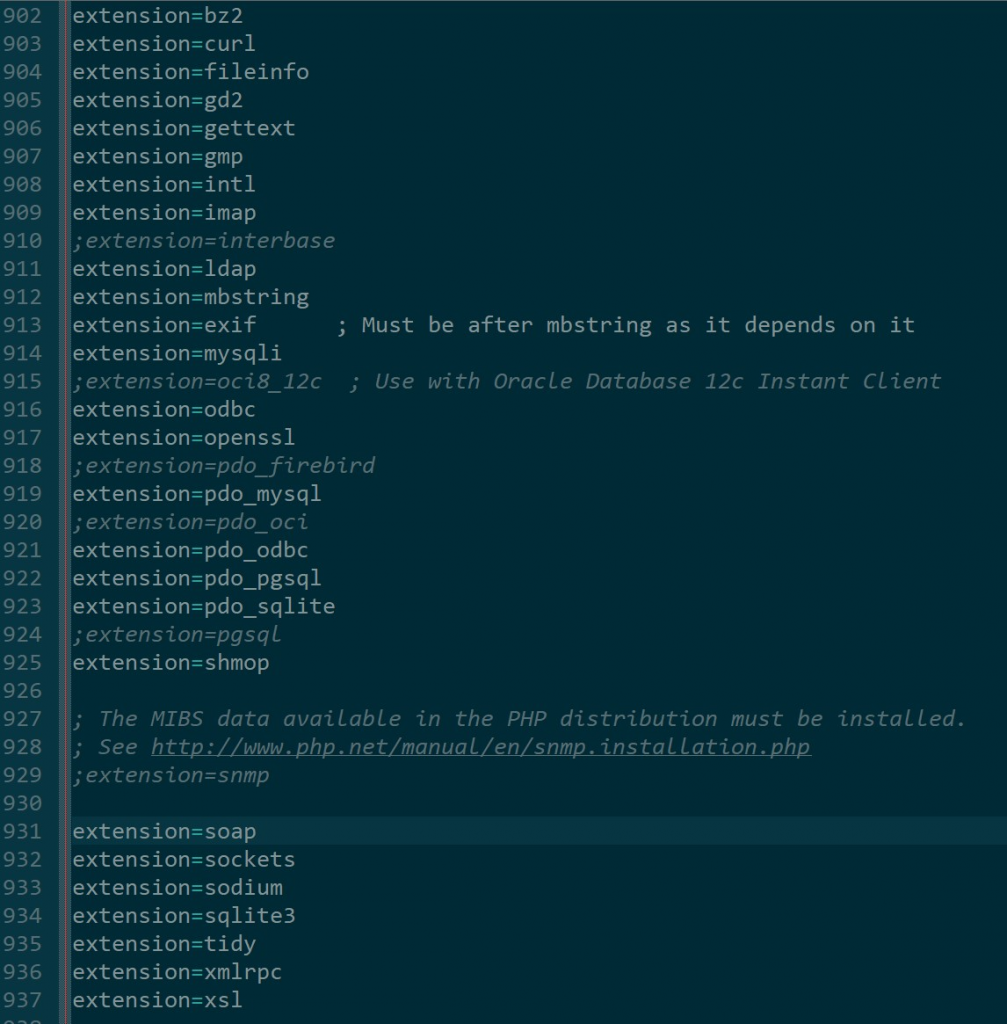
Tweak other settings as needed.
Note: Don’t forget to keep your php.ini file in a safe place when you upgrade in the future!
Add C:\PHP7 to the Windows 10 system path environment variable.
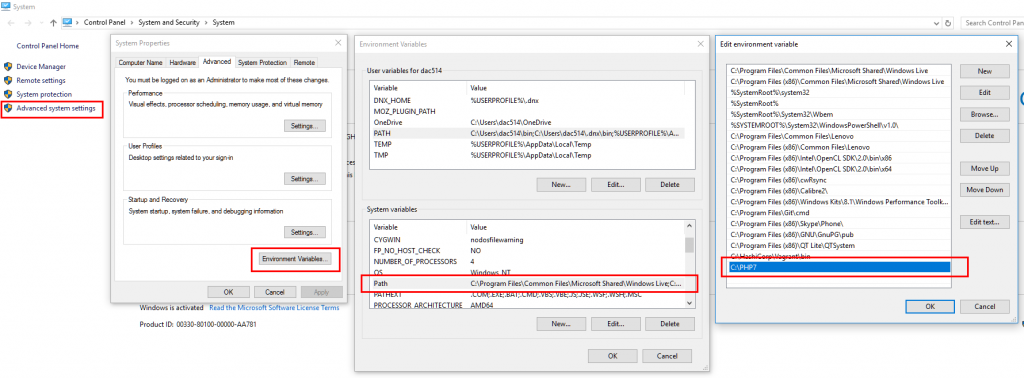
In a command prompt test that the installation is successful by typing php -v
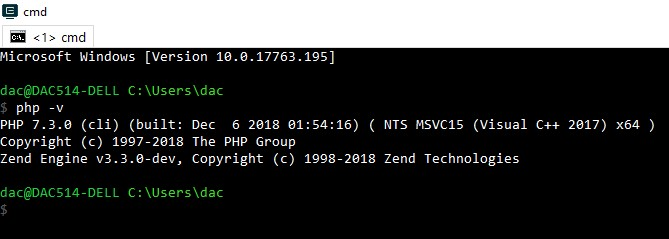
On my computer I’ve created a C:\Users\dac\bin directory where I keep miscellaneous executables. This directory is in my user path.
Use a search engine to find a tutorial and do something similar. Optionally install composer in the C:\PHP7 directory you just created as it’s already in your path.
To get composer.phar, drop to a command prompt, cd into your target directory, and run:
php -r "copy('https://getcomposer.org/installer', 'composer-setup.php');"
php composer-setup.php
php -r "unlink('composer-setup.php');"
(Important! Click here for a more secure and up-to-date install snippet.)
Next, create a new composer.bat file alongside the composer.phar file so that Windows 10 can execute it more easily. (Source)
echo @php "%~dp0composer.phar" %*>composer.bat
Test that it’s working by typing composer -V
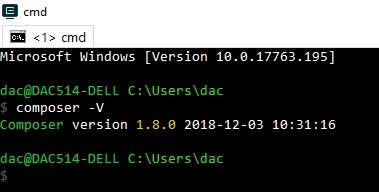
Opulence v1.0.0 has been released.
Finally, a promising PHP7 framework that doesn’t try to be YAML or C#
(IDE auto-complete > magic syntax)